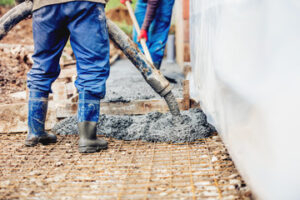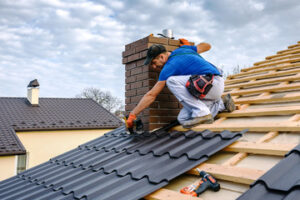Purchasing a new home can be a rewarding experience. But before you start shopping, it’s important to get your finances in order.
Lenders will look at your credit score, how much debt you have and how you’ve handled previous loans. The stronger these factors are, the better your chances of getting approved for a mortgage. Contact Altitude House Buyers for professional help.
1. We Buy Houses in Any Condition

Buying a home is a big step, and it’s one that can take a while. There are a lot of factors that can affect how long the process takes, and there are also a few things that you should keep in mind to make the process as smooth as possible.
Before you begin your search for a new home, it’s important to know how much you can afford. This will help you narrow down your options and find the perfect house for your needs. It’s also a good idea to research neighborhoods before you make a purchase. This way, you can avoid any surprises that might arise down the road.
There are a few attributes that most buyers will look for when looking for a home. These include things like good on-street parking, a garage, and a utility room. While these aren’t necessarily deal-breakers, they can be a great selling point for your home.
Another thing that buyers will be looking for is a well-maintained yard. This is because it will give them a sense of security and allow them to enjoy the outdoors. In addition, a well-maintained yard will add to the curb appeal of your home. It’s also a good idea for buyers to visit the neighborhood at different times of day to see how safe it is.
Finally, it’s a good idea for buyers to bring a list of questions and concerns with them when viewing homes. This will help them identify any issues that may need to be addressed. It will also help them determine whether or not a property is right for them.
During the homebuying process, it’s important to remember that negotiation is a huge part of the process. When negotiating with a seller, it’s important to be respectful and polite. You should never insult the seller or their home, and you should try to be as honest as possible.
When negotiating with a seller, you should always try to come up with a win-win solution. This will help you get the most out of the transaction and ensure that both parties are satisfied with the outcome.
2. We Buy Houses in Any Location
The location of your home is one of the biggest factors that will determine its appeal to potential buyers. If your property is within the catchment area for good schools, close to public transport links or a short walk from green space, then you will be likely to attract more buyers. This is something that you can’t always control, but it is important to keep in mind when selling your house.
Other desirable attributes of a home include on street parking, garages and utility rooms. While these are not considered essential, many people still appreciate having them available. Smart security systems are also a big draw for buyers, with many preferring homes that come with this feature already installed.
When buying a house, it is important to do your research and understand the process of homeownership. It is also a good idea to work with an experienced real estate agent who can guide you through the process. The right agent can help you find a house that fits your needs, negotiate with the seller and help you complete your purchase.
Another important factor to consider when buying a home is the state of the housing market. It can affect how long it takes to find a house and the price you pay for it. There are currently several ways to assess the market, including looking at prices for sold properties and comparing them with those for homes for sale.
It is a good idea to speak with your lender before you start looking for a home to find out what types of loans are available and what your credit score is. This will help you decide what type of loan you should get and how much you can afford to spend.
3. We Buy Houses for Any Reason
Many buyers have a list of things they want in a home. For example, commuters may want to be close to the train station, families with children might prefer a school in their area and young professionals might prioritize a garden. But there are also certain attributes that are regarded as deal-breakers by house buyers. These include good on street parking, a garage and a utility room.
The homebuying process can be a lot of work. It involves determining how much house you can afford, seeing multiple homes and narrowing down your options, and negotiating the price of your new home. It’s important to understand the homebuying process so that you can be prepared for what’s to come.
It’s also a good idea to review your finances to make sure you’re financially ready for homeownership before you start shopping. This will help you avoid surprises down the road and ensure that you’re buying a home you can afford. Here are some tips to help you navigate the homebuying process:
4. We Buy Houses for Any Price
Buying a house can be a life-changing decision. Whether you’re looking to start a family or just want to live in a safer, friendlier neighbourhood, it’s important to do your research ahead of time. First and foremost, you need to understand how much you can afford before you set out on your homebuying journey. This requires careful consideration of your income, debt, and savings. You may also be surprised to discover that you’re not ready to embark on this journey just yet. Instead, it’s better to delay homeownership and focus on eliminating debt and saving more money.
Once you have an idea of how much you can afford, it’s time to start looking at homes. While each person’s requirements will differ – commuters might want to be close to public transport, families with children might need good schools nearby, and young professionals might want easy access to the city centre – there are a few key things that most buyers look for in a property.
For example, many buyers will be willing to pay more for a home in a safe and friendly neighbourhood. Aside from the neighbourhood, they’ll also be interested in the size and condition of the property, as well as its location and amenities. Typically, buyers will prefer a home with a decent garden and on-street parking. They might also prefer a property with a garage or a workshop for storage purposes.
Another feature that most house buyers want is a security system. This could include a smart doorbell or security cameras. With the recent spate of burglaries in the media, it’s not surprising that security features are high on buyers’ wish list.
If you’re a seller, you can add extra appeal to your property by offering to pay for these additional costs. In addition, you can save on real estate agent fees by selling your home to an investor. This will help you avoid the hassle and expense of listing your home on the MLS and significantly shorten your selling timeline.








